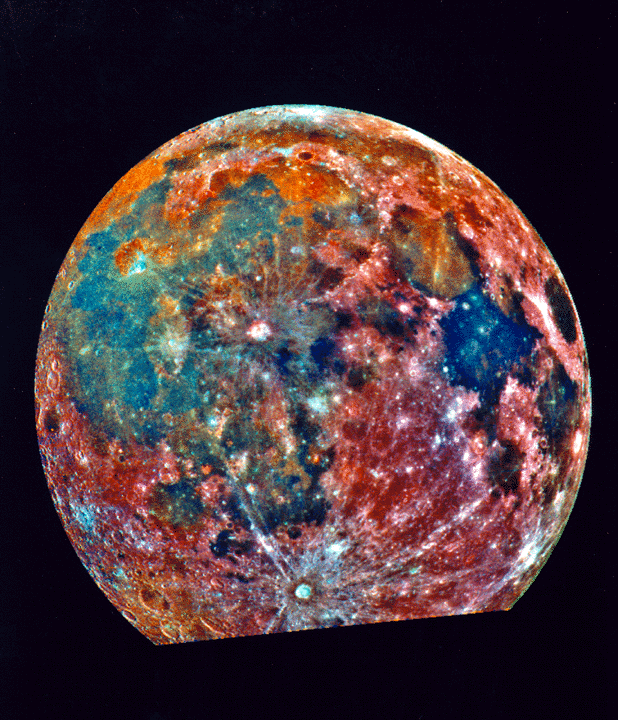
Caption: "The Galileo spacecraft false-color composite image of the Moon. The image was created using 3 exposures through different filters. The exaggerated color helps determine surface composition:
Mare Tranquillitatis is the blue area at right, Oceanus Procellarum is the blue and orange area on the left, the 85 km diameter Crater Tycho is at bottom center, and Crater Copernicus is just above and left of the center of the image. The Moon is 3,476 km in diameter and north is up." (Somewhat edited.)
The Galileo spacecraft (1989--2003) on its way to Jupiter produced this very false color image.
The false colors emphasize the maria and craters and other features.
The Crater Tycho (diameter 85 km) is near the south. It is NOT the among the largest lunar craters, but it is very recognizable because of the rays that radiate from it. It is a rayed crater.
The rays were produced by the Crater Tycho impact: they are filaments of ejecta thrown out by the impact and then fell back onto the lunar surface. They extend halfway around the Moon. These rays would have been erased by subsequent impacts and space weathering if Crater Tycho were an old lunar crater. However, Crater Tycho is estimated to be only 108 Myr old (Wikipedia: Lunar crater) which is very young for a lunar crater since most of them date to heavy bombardment (4.6--c.3.8 Gyr BP).
Credit/Permission: NASA,
1992 /
Public domain.
Download site: NASA:
Earth's Moon - Galileo.
Image link: Itself.
Local file: local link: moon_map_composition_false_color.html.
File: Moon map file:
moon_map_composition_false_color.html.